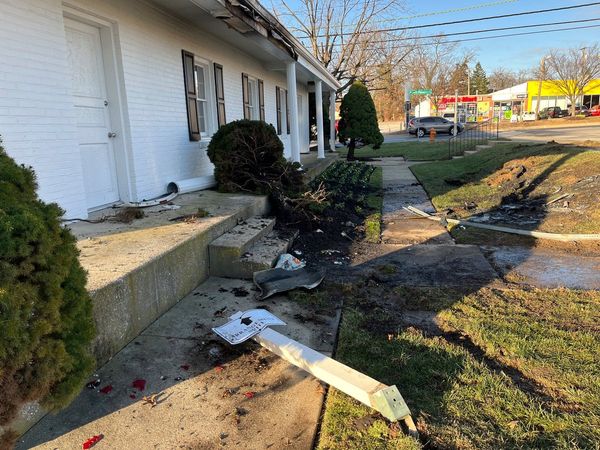
Homeownership is often seen as the cornerstone of success and fulfilling the “American Dream.” However, housing market conditions have pushed that milestone further out of reach for many Americans, particularly Millennials.
Older Millennials were still early in their careers during the 2007–2008 Financial Crisis and were hit by financial hardship again in 2020 during the COVID-19 pandemic. The rapid succession of financially challenging events has set Millennials off track compared to their Baby Boomer and Gen X counterparts when they were at the same age.
Due to these constraints, Millennials hold the largest share of outstanding student loans and the highest number of credit card delinquencies. Though homeownership is commonly thought of as a major life milestone, it may not be feasible for some.
Related: Dave Ramsey shares advice on mortgages and buying a home now
Millenial income can't keep pace with home prices
Some housing experts estimate that incomes would have to increase by 55% to keep pace with rising housing prices. Millennials concur: 47% strongly agree that wages have not kept pace with rising housing costs.
Though mortgage rates have eased to 6.77%, the housing market remains sluggish. Freddie Mac found that total home sales fell 2.3% from April 2023 to May 2023 and 4.9% year-over-year from May 2023 to May 2024. Housing inventory is predicted to remain low through 2024 but will improve in 2025 due to mortgage rates falling below 6.5%.
Doug Duncan, Senior Vice President and Chief Economist at Fannie Mae, suggests that the slow housing market is due to several compounding factors that lead back to affordability. “The housing market continues to wait for affordability to improve, even as the supply of new and existing homes for sale slowly rises.”
“The slight decline in mortgage rates of late, following data pointing to gradually slowing economic growth, has not been enough to overcome the significant affordability constraints imposed on would-be homebuyers. As such, despite more homes being listed for sale, actual home sales have not picked up.”
Would-be homebuyers discouraged by the housing market
Younger prospective homeowners are interested in the market, but affordability concerns hold them back from fully committing.
Two-thirds of Gen Zers are eager to buy a home, but 40% are worried about affording closing costs and down payments, and 48% are concerned about maintaining property tax costs further down the line.
61% of Millennials are interested in homeownership, which is slightly lower than their Gen Z counterparts. However, 40% are worried about even qualifying for a mortgage loan, and 58% are concerned about the maintenance and upkeep costs of owning a home.

Lindsey Nicholson/UCG/Universal Images Group via Getty Images
Alejandra Grindal, Chief Economist at Ned Davis Research, notes that Baby Boomers are adding to the housing crunch by driving up demand by holding inventory longer.
“They are the second-largest age cohort in the U.S., and they're also driving up demand, partly because they can afford to."
"Compared to prior generations," she added, "[Baby boomers] also plan on staying in their homes much longer. They don't want to go to assisted living or nursing care. They want to live in their homes as long as possible. Plus, a lot of them would like to own second homes."
More on personal finance:
- How your mortgage is key to early retirement
- Social Security benefits report confirms major changes are coming
- The average American faces one major 401(k) retirement dilemma
When interest rates surged to 8.3% in October 2023, many Millennials felt they were being pushed out of the housing market, as they were less equipped to manage the rising cost of borrowing than older buyers.
The Bank of America Institute found that Escrow payments out of Bank of America Consumer Accounts — a proxy for home buying — have slowed for Millennials more than older generations. Millennials made up just 28% of first-time home buyers in October 2023, down from 35% in mid-2020, when consumers enjoyed record-low mortgage rates.
A housing bubble may be looming
To combat the challenging market, some Millennials are turning to alternative methods of homeownership. Ten percent of Millennials have bought a home with a friend, and seven percent have partnered with relatives to make the purchase.
37% of Millennials believe it is a bad time to buy a house, prompting many to hold off on homeownership for the foreseeable future. Many enter the housing market later than older generations, which may lead to a housing bubble.
Related: The average American faces one major 401(k) retirement dilemma
Chris Powell, Executive Director of the Business Research Center at the University of Indiana, and Sara Coers, a real estate lecturer at the University of Indiana, predict that a generational housing bubble may be underway.
"The housing bubble is going to be in 10–20 years, at the end of the life of baby boomers, when they finally put their houses on the market."
"New housing built now to meet strong demand may sit vacant in a decade. Demand reversal will intensify by the mid-2030s when the annual number of homes that seniors add back to the market is expected to be 40 percent higher than current levels.”
Dave Liniger, founder of real estate brokerage firm RE/MAX, adds, “You’ve got an entire generation of pent-up demand,” Liniger says. “We’re in this fascinating position of tremendous demand and too little inventory. When interest rates start to come down, it’ll be another boom-and-bust cycle.”
Related: Veteran fund manager picks favorite stocks for 2024







